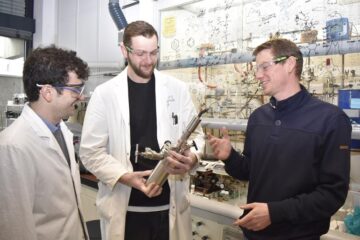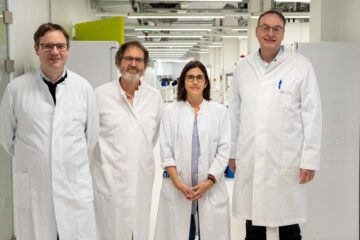NIST develops test method for key micromechanical property

Since 1727, scientists and engineers have used Young’s modulus as a measure of the stiffness of a given material. Defined as the ratio of stress (such as the force per unit area pushing on both ends of a beam) to strain (the amount the beam is deflected), Young’s modulus allows the behavior of a material under load to be calculated.
Young’s modulus predicts the length a wire will stretch under tension or the amount of compression that will buckle a thin film. A standard method to determine this important parameter—a necessity to ensure that measurements of Young’s modulus made at different locations are comparable—has eluded those who design, manufacture and test MEMS devices, particularly in the semiconductor industry.
A team at NIST recently led the effort to develop SEMI Standard MS4-1107, “Test Method for Young’s Modulus Measurements of Thin, Reflecting Films Based on the Frequency of Beams in Resonance.” The new standard applies to thin films (such as those found in MEMS materials) that can be imaged using an optical vibrometer or comparable instrument for non-contact measurements of surface motion. In particular, measurements are obtained from resonating beams—comprised of the thin film layer—that oscillate out-of-plane.
The frequency at which the maximum amplitude (or velocity) of vibration is achieved is a resonance frequency, which is used to calculate the Young’s modulus of the thin film layer. The group also developed a special Web-based “MEMS calculator” (http://www.eeel.nist.gov/812/test-structures/MEMSCalculator.htm) that can be used to determine specific thin film properties from data taken with an optical interferometer.
Knowledge of the Young’s modulus values and the residual strain (using ASTM International Standard E 2245) for thin film layers can lead to calculations of residual stress, which in turn, enable semiconductor manufacturers to develop circuit design strategies, fabrication systems and post-processing methods that could increase fabrication yield by reducing the frequency of failures from electromigration, stress migration and delamination.
Media Contact
All latest news from the category: Power and Electrical Engineering
This topic covers issues related to energy generation, conversion, transportation and consumption and how the industry is addressing the challenge of energy efficiency in general.
innovations-report provides in-depth and informative reports and articles on subjects ranging from wind energy, fuel cell technology, solar energy, geothermal energy, petroleum, gas, nuclear engineering, alternative energy and energy efficiency to fusion, hydrogen and superconductor technologies.
Newest articles

Efficient, sustainable and cost-effective hybrid energy storage system for modern power grids
EU project HyFlow: Over three years of research, the consortium of the EU project HyFlow has successfully developed a highly efficient, sustainable, and cost-effective hybrid energy storage system (HESS) that…

Safer alternative for an explosive reaction
The chemical industry has been using a reaction with explosive chemicals for over 100 years – now Mülheim scientists have discovered a safer alternative. The Ritter Group of the Max…

How immune cells communicate to fight viruses
Chemokines are signalling proteins that orchestrate the interaction of immune cells against pathogens and tumours. To understand this complex network, various techniques have been developed to identify chemokine-producing cells. However,…





















